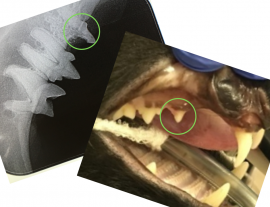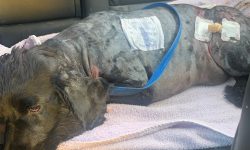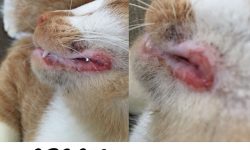George, a 6 year-old Domestic Short Hair cat, recently presented to Uni Vets Camden for a vaccination visit.
During his routine wellness exam, there was evidence of tooth erosion visible on the gum border of one of his teeth, so a dental procedure was recommended. Full-mouth dental radiographs were taken as part of a routine dental assessment, and it confirmed tooth root resorption not only of the previously identified tooth, but with a second premolar tooth as well.
This condition is called Feline Odontoclastic Resorptive Lesions (FORLs), and is a very common dental problem in cats (with up to 75% of cats being affected during their life time). Cats can present with symptoms of oral pain, potentially combined with decreased appetite, pawing at the mouth, drooling or weight loss. However, often cats do not show signs of discomfort until advanced signs of disease are present. A combination of careful clinical examination and full-mouth dental radiographs is necessary for accurate diagnosis, particularly as the majority of tooth pathology occurs beneath the gum line. Often the treatment for FORLs, like in George’s case, is extraction of the affected teeth, which helps remove the source of pain.
If you think that your cat is not behaving itself and presents with some of the above symptoms, don’t hesitate to have a chat with one of our friendly veterinarians at Uni Vets Camden to see whether your cat has FORLs.
Uni Vets Camden are offering 25% off the cost of our routine dental procedures during August, which includes dental charting under a general anaesthetic, full-mouth dental radiographs, and dental scaling and polishing.
By Amanda Young, Final Year Veterinary Student, The University of Sydney






